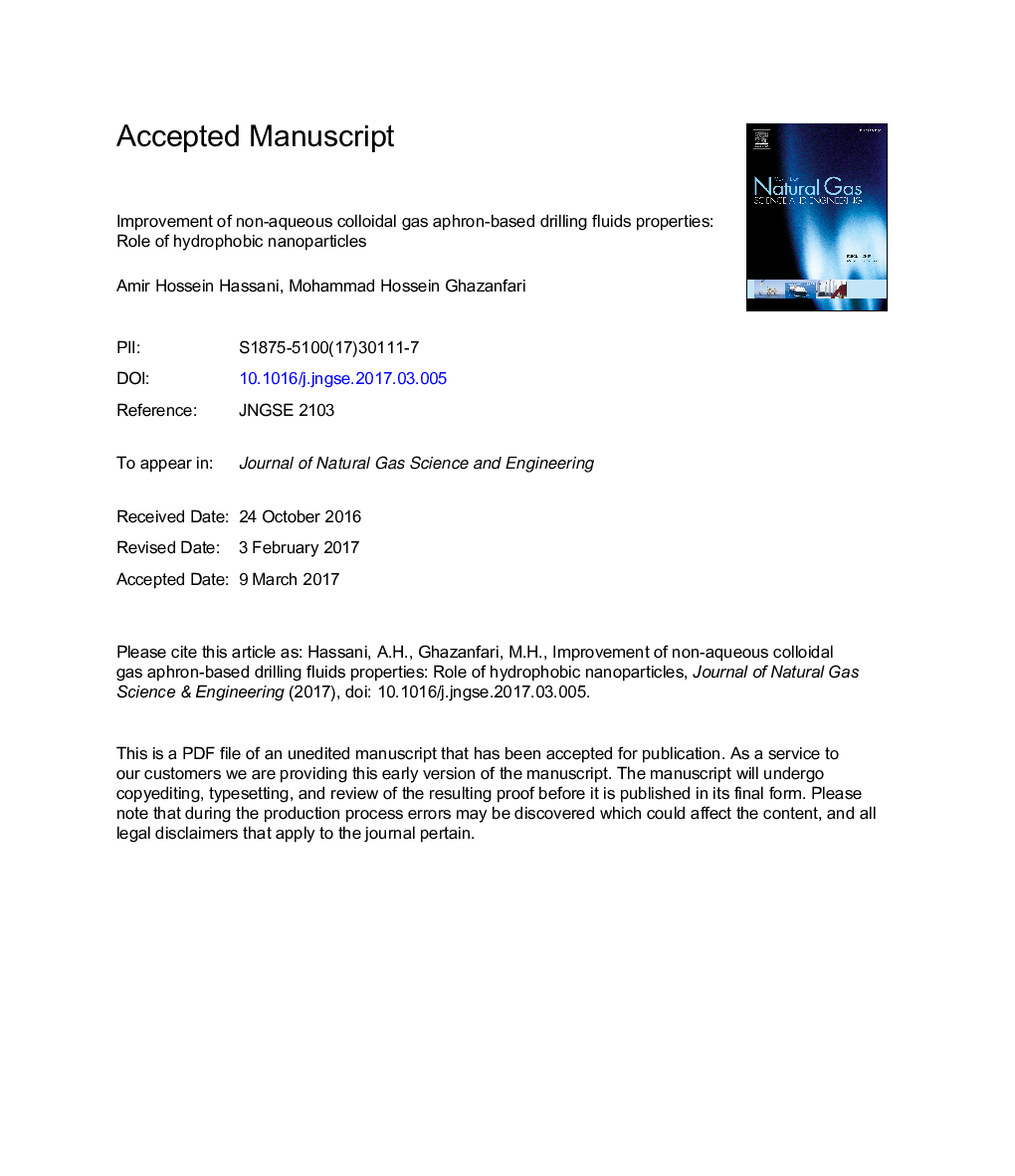| Article ID | Journal | Published Year | Pages | File Type |
|---|---|---|---|---|
| 5484701 | Journal of Natural Gas Science and Engineering | 2017 | 53 Pages |
Abstract
Application of the colloidal gas aphrons (CGAs) in minimizing formation damage by plugging pore mechanism is now wildly accepted due to numerous successful field experience. One of the pivotal factors which affects the pore blockage ability of micro-bubbles is their stability. This experimental study tries to investigate the possible synergistic effect of nanoparticles on improving the stability and other properties of non-aqueous CGA drilling fluids, in both bulk and porous media. In particular, two types of hydrophobic nanoparticles including silicon dioxide nanopowder coated with 2Â wt% Silane and nanoclay, in presence of a treated version of bentonite (Bentone 34) as a stabilizer and sorbitane monooleate as a non-ionic surfactant are utilized for the formulation of kerosene-based CGA fluids. Results of measuring static drainage rate, API filtration loss, and return permeability in a special designed radial flooding sandpack showed that presence of nanoparticles enhances the stability, filtration loss properties, and the pore blockage ability of non-aqueous CGA drilling fluids. Compared to hydrophobic SiO2, hydrophobic nanoclay was more effective in increasing the stability and plugging performance of non-aqueous CGAs, at an optimum concentration. Also, rheological analysis indicated that nanoparticle addition increases the low shear rate viscosity of non-aqueous CGA fluids and boosts their cutting transport capacity. Optimum concentrations of stabilizer and surfactant were observed to be 3.5 gr in 100Â cc kerosene and 1.8Â wt%, respectively. Obtained results may provide a better background for the physico-chemical characterization of non-aqueous CGA fluids, especially in presence of nanoparticles.
Related Topics
Physical Sciences and Engineering
Earth and Planetary Sciences
Earth and Planetary Sciences (General)
Authors
Amir Hossein Hassani, Mohammad Hossein Ghazanfari,
